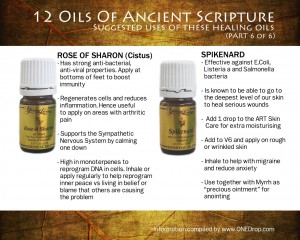
Song of Solomon 2:1 “I [am] the rose of Sharon, [and] the lily of the valleys.”
Isaiah 61:3: “To provide for the mourners in Zion, to give them beauty instead of ashes.”
Let me show you something that is interesting. The word for beauty in Isaiah 61:3 is pe’er (Pei, Aleph, Resh) and the word for ashes is“’eper” (Aleph, Pei, Resh). Both words can be used to represent a turban.
Even Muslims will admit that turbans have their origins with Judaism. Oddly, it is rarely used by Jews today. Turbans have taken on many different meanings throughout it’s history. Among the Jews it was to be a sign of healing, purity and honor. Aaron as a high priest wore a turban as well as his sons. This was to be a sign that they were pure enough to be honored as a priest who also laid hands on the people and anointed them with oils to be healed.
Turbans were made of fine linen. Fine linen of ancient times was very difficult to come by and only the wealthy could afford it and by the time of Isaiah it was a sign of wealth and/or authority.
So why does Isaiah use pe’er and ‘eper. He will give them a turban instead of a turban. Pe’er is a turban worn by those who are honored or priest who performed healings. This is sometimes translated as beauty. Beauty here is used in the sense of purity, respect, or honor. The word for ashes ‘eper is also a Turban worn by the rich, and honored, but they are in state of mourning andsadness, thus we translate ashes as ashes represent mourning, penitence and sadness. Catholics probably know this symbol well as each year they receive ashes on their forehead as a sign of repentance and mourning for their sins. God will exchange a turban of healing, purity and honor for one of mourning and sadness.
I view this as a message for Christians. Many of us are wearing an ‘eper a turban underneath of which lies heartbreak, sadness, and mourning. God will exchange that ‘eper for a pe’er a Turban for healing, beauty and joy.
The ancient Jewish sages tried to explain this with an old story I read in Jewish literature. I was about a king who acquired the largest ruby in the world. He was so delighted and he gave it to the royal jeweler to polish it and make it perfect. The jeweler examined it with his practiced eye and replied: “Your majesty there is a crack in this stone.” “Well, fix it .” declared the king. “I can not.” replied the jeweler. “However, I can cut it into three smaller pieces and each will be beautiful and perfect.” But the king replied: “ No then it will not be the biggest, it will not be the best.”
The king hired a number of jewelers, but not one knew how to fix the crack and turn the jewel into a large, beautiful and perfect ruby.
One day a visitor came to the palace. He saw the ruby and asked permission of the king to examine it. After a long period of examination he said, “I can make your stone into something beautiful. The king asked: “Will it be big? Will it be beautiful? Will it be perfect?” The visitor replied: “Yes, yes and yes.”
Everywhere in the palace you could hear the grinding and polishing. It took three days (yes three, this is the way the sages tell the story). Finally the jeweler approached the king with the jewel covered by a black cloth. “It is still big? Is it beautiful? “Is it perfect?” asked the king anxiously. “Yes, yes and yes,” replied the visitor. “But, the crack, how did you get rid of the crack?” asked the King. “It is still there.” replied the visitor and with that he removed the black cloth to reveal the biggest, most beautiful and most perfect ruby in the world. At the center of the stone was now carved a most wonderful rose. The crack had become the stem. The king was awed and he did something unusual. He stopped talking and just stared in wonder at the worlds biggest, most beautiful and perfect jewel.
It is believed that this king was actually Solomon who called himself the Rose of Sharon, the term which we as Christians associated with Jesus in the Song of Solomon 2:1: “I am the rose of Sharon.” It is believed that Solomon wore a turban or a per’er (turban of healing, purity and authority).
Why did Solomon call himself the Rose of Sharon? Why do we call Jesus the Rose of Sharon? In Hebrew the Rose of Sharon ischabatstseth (Rose) HaSharon (the Sharon). Chabatstseth is believed to be the cistus ladanifer, a flower found among thorns. As goats and sheep would wander through bushes this flower would be entangled in their wool and at times penetrate their skin causing cuts and wounds. The shepherds would actually take these flowers entangled in their coats and rub them in their wounds to heal their wounds and prevent infection. Today we have an essential oil that we call the Rose of Sharon that is used for healing of cuts and wounds. Shepherds would often do a little side trading, collecting the Rose of Sharon and selling them to merchants who sold them to coastal traders to be turned into an oil to be used to soothe wounds suffered by soldiers in battle.
Oh, and the word Sharon, it comes from an ancient Semitic root word found in the Akkadian, Ugaritic and Phoenician language, it is the word sar which means a prince. Jesus is our Rose of Sharon who takes our ‘eper (turban of pain and heartbreak) and replaces it with a pe’er (turban of healing and honor).
We may have many flaws, but God created us as a beautiful gem stone. We only need the Rose of Sharon to take our flaws and make something beautiful out of it, to exchange our turban of mourning and heartbreak to a turban of healing and joy. It is the Rose of Sharon who gives us beauty for our ashes.
 for more information on therapeutic grade Essential Oils please contact Laura or visit our Essential Oils website at www.youngliving.org/laurabertone These oils are amazing…pure essence from God’s creation for our spirit,soul, and body. Also a natural and affordable alternative for pets!
for more information on therapeutic grade Essential Oils please contact Laura or visit our Essential Oils website at www.youngliving.org/laurabertone These oils are amazing…pure essence from God’s creation for our spirit,soul, and body. Also a natural and affordable alternative for pets!






Recent Comments